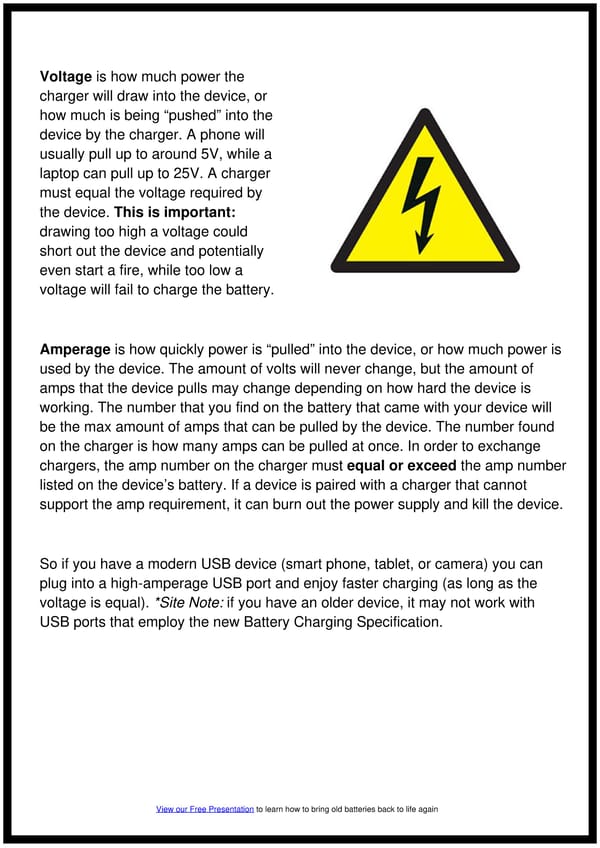Voltage is how much power the charger will draw into the device, or how much is being “pushed” into the device by the charger. A phone will usually pull up to around 5V, while a laptop can pull up to 25V. A charger must equal the voltage required by the device. This is important: drawing too high a voltage could short out the device and potentially even start a fire, while too low a voltage will fail to charge the battery. Amperage is how quickly power is “pulled” into the device, or how much power is used by the device. The amount of volts will never change, but the amount of amps that the device pulls may change depending on how hard the device is working. The number that you find on the battery that came with your device will be the max amount of amps that can be pulled by the device. The number found on the charger is how many amps can be pulled at once. In order to exchange chargers, the amp number on the charger must equal or exceed the amp number listed on the device’s battery. If a device is paired with a charger that cannot support the amp requirement, it can burn out the power supply and kill the device. So if you have a modern USB device (smart phone, tablet, or camera) you can plug into a high-amperage USB port and enjoy faster charging (as long as the voltage is equal). *Site Note: if you have an older device, it may not work with USB ports that employ the new Battery Charging Specification. View our Free Presentation to learn how to bring old batteries back to life again
 PDF Report Page 3 Page 5
PDF Report Page 3 Page 5